-
 Bitcoin
Bitcoin $84,457.4214
0.92% -
 Ethereum
Ethereum $1,829.8451
0.55% -
 Tether USDt
Tether USDt $0.9997
-0.02% -
 XRP
XRP $2.0954
2.23% -
 BNB
BNB $598.7719
0.15% -
 Solana
Solana $118.6251
0.10% -
 USDC
USDC $1.0000
0.01% -
 Dogecoin
Dogecoin $0.1671
1.78% -
 Cardano
Cardano $0.6618
1.40% -
 TRON
TRON $0.2377
1.43% -
 Toncoin
Toncoin $3.5816
-4.06% -
 UNUS SED LEO
UNUS SED LEO $9.3756
-0.53% -
 Chainlink
Chainlink $13.1452
1.21% -
 Stellar
Stellar $0.2641
0.86% -
 Avalanche
Avalanche $18.6434
1.32% -
 Sui
Sui $2.2741
-1.61% -
 Shiba Inu
Shiba Inu $0.0...01242
1.57% -
 Hedera
Hedera $0.1653
1.39% -
 Polkadot
Polkadot $4.1060
2.62% -
 Litecoin
Litecoin $84.7956
1.36% -
 Bitcoin Cash
Bitcoin Cash $309.5484
0.86% -
 MANTRA
MANTRA $6.3338
-0.32% -
 Bitget Token
Bitget Token $4.5595
-0.31% -
 Dai
Dai $1.0001
0.01% -
 Ethena USDe
Ethena USDe $0.9996
-0.02% -
 Monero
Monero $218.5279
2.20% -
 Hyperliquid
Hyperliquid $11.9044
-0.26% -
 Uniswap
Uniswap $6.0152
0.61% -
 Pi
Pi $0.5562
-11.58% -
 Aptos
Aptos $5.0753
-2.98%
Practical analysis skills of cryptocurrency candlestick charts
Candlestick charts analyze crypto price movements, showing open, high, low, and close prices. Patterns like hammers and engulfing suggest potential reversals; combine with indicators for accuracy.
Apr 02, 2025 at 09:15 pm
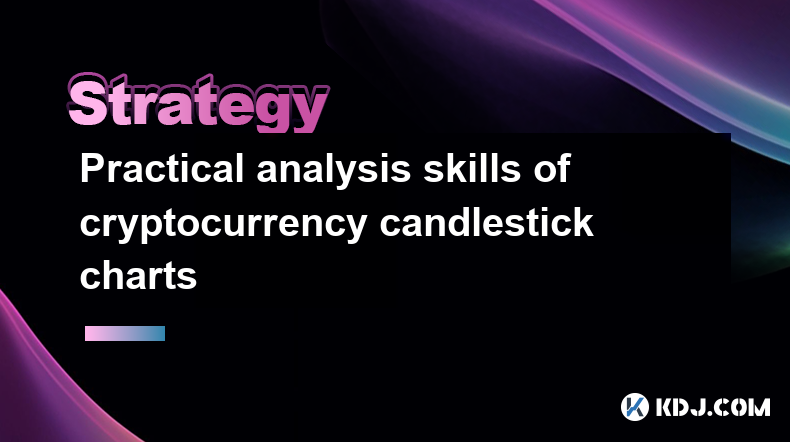
Understanding Candlestick Chart Basics
Candlestick charts are a powerful visual tool for analyzing price movements in cryptocurrencies. Each candlestick represents a specific time period (e.g., 1 hour, 1 day, 1 week), showing the open, high, low, and closing prices. The body of the candle indicates the range between the open and closing prices, while the wicks (shadows) extend to the high and low prices of that period. Understanding these elements is crucial for interpreting price action. A green candle signifies a closing price higher than the opening price (bullish), while a red candle shows the opposite (bearish).
Identifying Key Candlestick Patterns
Certain candlestick patterns frequently appear and can offer insights into potential future price movements. Bullish patterns like the hammer and the engulfing pattern suggest a potential price reversal to the upside. Conversely, bearish patterns such as the hanging man and the dark cloud cover indicate a possible price reversal downwards. Recognizing these patterns requires practice and careful observation of context within the broader market trend.
Analyzing Candlestick Chart Bodies
The size of the candlestick body provides valuable information. A long body indicates strong momentum in the direction of the trend, while a short body suggests indecision or a weakening of the trend. The relationship between the body and the wicks also offers clues. Long wicks often signal rejection of a price level, indicating potential turning points.
Interpreting Wicks (Shadows)
The wicks, or shadows, extending above and below the candle body are equally important. A long upper wick suggests buyers were unable to push the price higher, potentially indicating resistance. Conversely, a long lower wick shows that sellers were unable to drive the price lower, potentially indicating support. Short wicks can signify strong conviction in the direction of the price movement.
Combining Candlestick Patterns with Indicators
While candlestick patterns offer valuable insights, combining them with other technical indicators enhances the accuracy of analysis. Moving averages, Relative Strength Index (RSI), and MACD can confirm or contradict the signals generated by candlestick patterns. This multi-faceted approach helps to reduce the risk of false signals and improves the overall trading strategy.
Understanding Support and Resistance Levels
Support and resistance levels are crucial concepts in technical analysis. Support levels are price points where buying pressure is expected to outweigh selling pressure, preventing further price declines. Resistance levels are the opposite, where selling pressure is anticipated to overcome buying pressure, halting price increases. Candlestick patterns often form around these levels, providing further confirmation of their significance.
Identifying Trend Reversals Using Candlesticks
Candlestick charts can help identify potential trend reversals. A series of bearish candles after an uptrend, coupled with bearish patterns like the dark cloud cover, might signal an impending downtrend. Similarly, a series of bullish candles following a downtrend, along with bullish patterns like the hammer, could indicate a potential uptrend. Confirming these reversals with other indicators is crucial.
Step-by-Step Guide to Analyzing a Cryptocurrency Candlestick Chart
Here’s a step-by-step process for analyzing a cryptocurrency candlestick chart:
- Identify the timeframe: Choose a timeframe relevant to your trading strategy (e.g., 1-hour, 4-hour, daily).
- Look for overall trends: Determine if the chart shows an uptrend, downtrend, or sideways movement.
- Identify support and resistance levels: Mark significant price levels where the price has bounced or reversed in the past.
- Analyze candlestick patterns: Look for patterns that suggest potential price reversals or continuations.
- Use additional indicators: Combine candlestick analysis with other indicators to confirm signals and reduce risk.
- Consider the broader market context: Analyze the overall market sentiment and news events that might affect the cryptocurrency's price.
Volume Analysis in Conjunction with Candlesticks
Volume analysis plays a crucial role in validating candlestick signals. High volume accompanying a strong bullish candle confirms the strength of the uptrend. Conversely, low volume during a price surge suggests weak buying pressure and a potential reversal. Similarly, high volume during a sharp price drop confirms the strength of the downtrend, while low volume during a price decline suggests weak selling pressure. Analyzing volume alongside candlesticks provides a more comprehensive picture.
Practical Application and Risk Management
Analyzing candlestick charts is a skill that improves with practice. Start by analyzing historical charts and identifying patterns. Then, apply your knowledge to live charts, but always use risk management techniques such as stop-loss orders to protect your capital. Remember that no analysis method guarantees success in the volatile cryptocurrency market.
Frequently Asked Questions
Q: What are the most common candlestick patterns?
A: Some of the most common candlestick patterns include the hammer, hanging man, engulfing pattern, dark cloud cover, and doji. Each pattern has its own implications regarding potential price movements.
Q: How do I choose the right timeframe for candlestick chart analysis?
A: The ideal timeframe depends on your trading strategy. Short-term traders might use 1-hour or 4-hour charts, while long-term investors may prefer daily or weekly charts.
Q: Can candlestick patterns be used alone for trading decisions?
A: While candlestick patterns offer valuable insights, it's generally recommended to combine them with other technical indicators and fundamental analysis for a more comprehensive trading strategy. Relying solely on candlestick patterns can be risky.
Q: What is the significance of volume in candlestick analysis?
A: Volume confirms the strength of price movements indicated by candlestick patterns. High volume during a price surge or drop validates the move, while low volume suggests weakness and a potential reversal.
Q: How can I improve my candlestick chart analysis skills?
A: Practice is key. Analyze historical charts, identify patterns, and gradually apply your knowledge to live charts. Consider using educational resources and trading simulators to hone your skills. Always practice risk management techniques.
Disclaimer:info@kdj.com
The information provided is not trading advice. kdj.com does not assume any responsibility for any investments made based on the information provided in this article. Cryptocurrencies are highly volatile and it is highly recommended that you invest with caution after thorough research!
If you believe that the content used on this website infringes your copyright, please contact us immediately (info@kdj.com) and we will delete it promptly.
- Is Binance Losing Its Credibility? Controversies Surrounding Token Listings and the Depegging of the FDUSD Stablecoin
- 2025-04-04 17:10:12
- Pi Network (PI) Loses Momentum as the Price of Pi Coin Continues to Fall
- 2025-04-04 17:10:12
- TRON (TRX) Impresses Among the Top 10 Cryptocurrency Pairs
- 2025-04-04 17:05:12
- Cardano Unveils Major Update for Digital Identity Security
- 2025-04-04 17:05:12
- Despite Sharp Fluctuations in Bitcoin's Price in Recent Days, Institutional Investors Seem to Show a Higher Level of Confidence
- 2025-04-04 17:00:12
- Pi Network (PI) Loses Momentum as Price of Pi Coin Continues to Fall
- 2025-04-04 17:00:12
Related knowledge
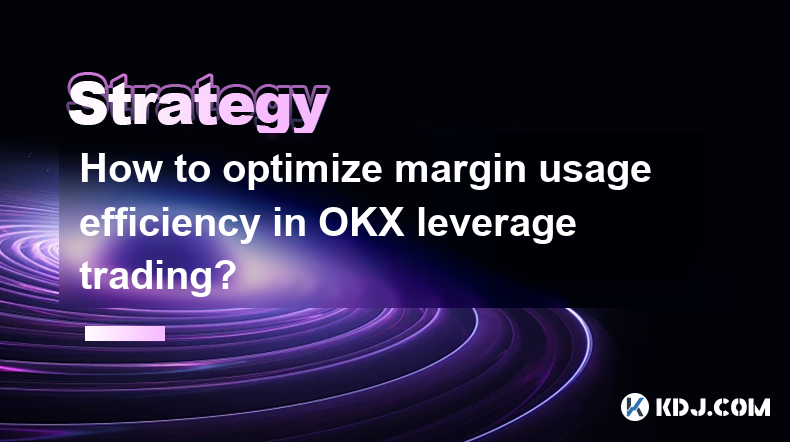
How to optimize margin usage efficiency in OKX leverage trading?
Apr 04,2025 at 03:21pm
Margin usage efficiency is a critical aspect of leverage trading on platforms like OKX, where traders aim to maximize their returns while managing risk. Understanding how to optimize margin usage can significantly enhance your trading performance. This article will delve into various strategies and techniques to help you make the most out of your margin...
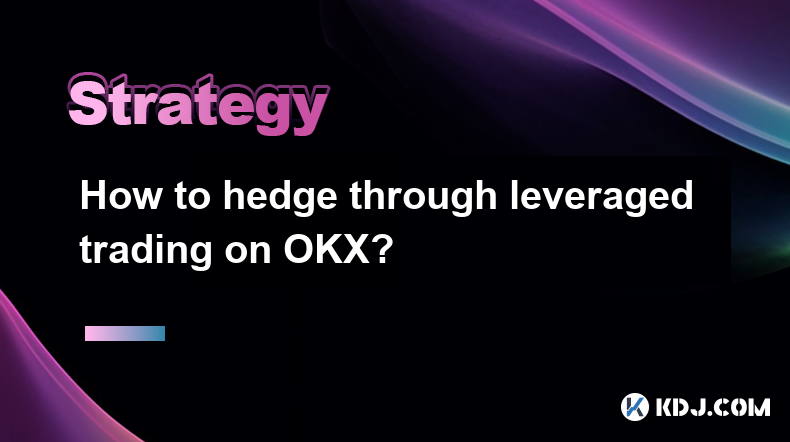
How to hedge through leveraged trading on OKX?
Apr 04,2025 at 01:42pm
Hedging through leveraged trading on OKX can be an effective strategy for managing risk in the volatile cryptocurrency market. This article will guide you through the process of setting up and executing a hedging strategy using OKX's leveraged trading features. We will cover the basics of leveraged trading, how to set up a hedge, and the steps to execut...
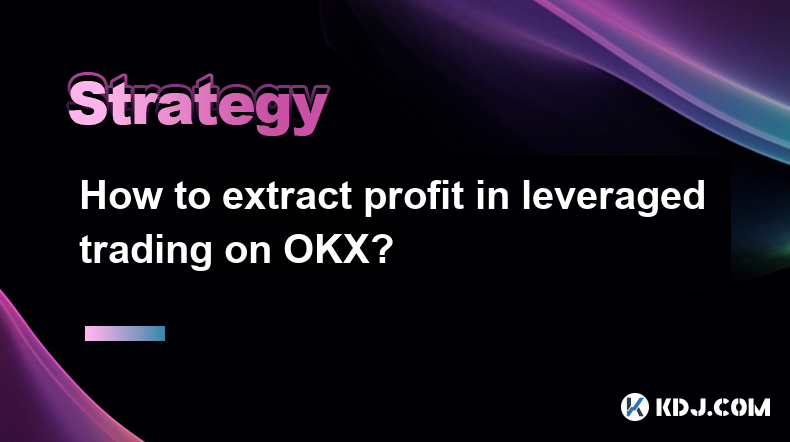
How to extract profit in leveraged trading on OKX?
Apr 04,2025 at 05:42am
Leveraged trading on OKX can be a powerful tool for traders looking to amplify their potential profits. However, it also comes with increased risk, making it essential to understand how to effectively extract profit from these trades. This article will guide you through the process of leveraging OKX's platform to maximize your gains while managing the i...
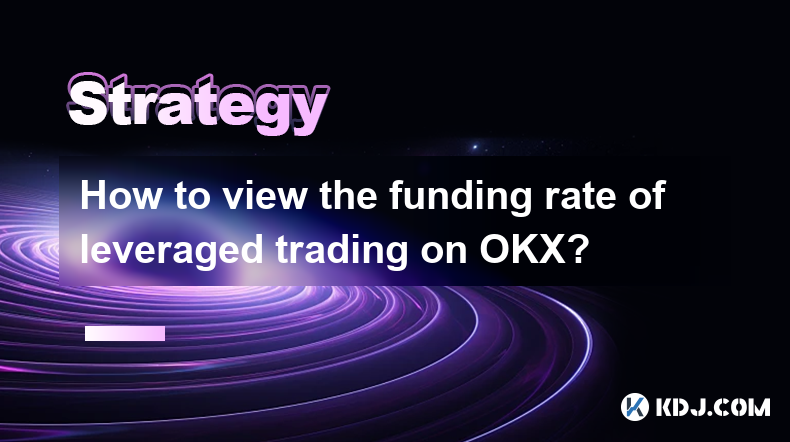
How to view the funding rate of leveraged trading on OKX?
Apr 04,2025 at 07:07am
Understanding the funding rate is crucial for anyone involved in leveraged trading on OKX. The funding rate is a mechanism used in perpetual futures contracts to ensure that the market price of the futures remains closely aligned with the spot price of the underlying asset. This article will guide you through the process of viewing the funding rate on O...

How to view the unrealized profit and loss of Binance margin trading?
Apr 04,2025 at 04:22pm
Margin trading on Binance allows users to trade with borrowed funds, amplifying both potential profits and losses. One crucial aspect of managing your margin trading account is keeping track of your unrealized profit and loss (PnL). Unrealized PnL refers to the profit or loss you would incur if you were to close your positions at the current market pric...

How to use the three crows candlestick combination to determine the market top?
Apr 03,2025 at 03:18pm
Three Black Crows are a classic K-line combination form that is often used to judge the top of the market in technical analysis. This pattern consists of three consecutive negative lines, the opening price of each negative line is within the entity of the previous K-line, and the closing price gradually decreases. This pattern usually appears at the end...

How to optimize margin usage efficiency in OKX leverage trading?
Apr 04,2025 at 03:21pm
Margin usage efficiency is a critical aspect of leverage trading on platforms like OKX, where traders aim to maximize their returns while managing risk. Understanding how to optimize margin usage can significantly enhance your trading performance. This article will delve into various strategies and techniques to help you make the most out of your margin...

How to hedge through leveraged trading on OKX?
Apr 04,2025 at 01:42pm
Hedging through leveraged trading on OKX can be an effective strategy for managing risk in the volatile cryptocurrency market. This article will guide you through the process of setting up and executing a hedging strategy using OKX's leveraged trading features. We will cover the basics of leveraged trading, how to set up a hedge, and the steps to execut...

How to extract profit in leveraged trading on OKX?
Apr 04,2025 at 05:42am
Leveraged trading on OKX can be a powerful tool for traders looking to amplify their potential profits. However, it also comes with increased risk, making it essential to understand how to effectively extract profit from these trades. This article will guide you through the process of leveraging OKX's platform to maximize your gains while managing the i...

How to view the funding rate of leveraged trading on OKX?
Apr 04,2025 at 07:07am
Understanding the funding rate is crucial for anyone involved in leveraged trading on OKX. The funding rate is a mechanism used in perpetual futures contracts to ensure that the market price of the futures remains closely aligned with the spot price of the underlying asset. This article will guide you through the process of viewing the funding rate on O...

How to view the unrealized profit and loss of Binance margin trading?
Apr 04,2025 at 04:22pm
Margin trading on Binance allows users to trade with borrowed funds, amplifying both potential profits and losses. One crucial aspect of managing your margin trading account is keeping track of your unrealized profit and loss (PnL). Unrealized PnL refers to the profit or loss you would incur if you were to close your positions at the current market pric...

How to use the three crows candlestick combination to determine the market top?
Apr 03,2025 at 03:18pm
Three Black Crows are a classic K-line combination form that is often used to judge the top of the market in technical analysis. This pattern consists of three consecutive negative lines, the opening price of each negative line is within the entity of the previous K-line, and the closing price gradually decreases. This pattern usually appears at the end...
See all articles




















































































